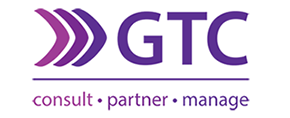Wealth Management – Preparing for your child’s education
_______________________________________________________________________________________________________
A considered approach to preparing for your child’s education
Introduction: The financial challenges of parenting
For most people, having children is relatively easy. Financially planning for this provision, not only for the benefit of the children, but also considering this budgetary exercise for the parent’s retirement planning – at least for the first twenty years or so – is considerably less so.
The rising costs of education: A burden for parents
When a couple wishes to plan for the extension of their family, it is also the time to consider the financial responsibility that this decision carries. Over and above the lifestyle change that accompanies the arrival of a newborn, is the ever-present and compulsory focus on the cost of their upbringing and education. Often not factored into this exciting phase – is the accommodation of compromise, and the quid pro quo that this decision to have a child (and each additional child replicating this quantum) has on you and your spouse in your financial planning and preparation for your retirement. It is not a coincident that the timing of extending ones family and beginning a retirement plan happen concurrently.
The 2024 school year is now well under way, with every parent wanting to provide the best that they can for their children. School fees and their annual increases (should) feature highly in family budget reviews. Recent news articles (with a Daily Maverick article featuring South Africa’s most expensive private schools) paint a sobering reminder of the actual costs of providing the best that’s on offer in this regard.
 The annual cost of a model C primary school ranges from R50 000 to R70 000 for grades R through 2 and from R65 000 and R70 000 for grades 3 through 7. This is a tall order for many families and of course applies to each child…
The annual cost of a model C primary school ranges from R50 000 to R70 000 for grades R through 2 and from R65 000 and R70 000 for grades 3 through 7. This is a tall order for many families and of course applies to each child…
Whilst steep, these model C costs are still less than an equivalent private school education – where the average annual fees for grades R to 2 are approximately R80 000 climbing to around R140 000 for grades 3 through to 7.
Remembering that life never allows one to have one’s cake and to eat it, the reality is that school fees (and all the other child related expenditures) must be subtracted from other financial goal setting, including retirement planning. Welcome to the complexity of lifestyle financial planning.
Strategies for funding your child’s education
There are perhaps three alternative schools of thought as regards preparing and paying for school fees:
1. Pay-as-you-go: Managing school fees from monthly income
In the first scenario, a couple selects to fund their child’s educational requirements from their salary/ies as and when they fall due. While this approach is potentially the easiest in the short term, it does have a knock-on effect for other financial goal setting, and manifests itself in scenarios such as the (inevitable) annual escalation rate of school fees being above CPI adjusted salaries.
An August 2023 BusinessTech article indicated that since 2012 school fees have risen by approximately 2.6% more than inflation each year over the last decade. Another 2023 article, written by PwC indicated that the increase in the average South African salary was 4.0% in 2022 compared to an average inflation rate of 6.9% in that year. It described that in 2023, salaries rose 5.2% as compared with CPI of 6.0%. Parents became poorer in real terms while incurring education inflationary costs that were greater than official CPI over recent years. This double-whammy is expressed in a recent article about Curro Schools where it is clear that parents are battling to fund private schooling.
Funding your child’s school costs as-and-when they fall due, from salary means a larger portion of your monthly income is committed to that cost into the future. Almost without exception, the first financial dominoes that fall are existing savings and the reduction – or elimination – of one’s own contributions to retirement savings, as a couple tries to meet conventional parenting responsibilities.
2. Debt financing: Risk and realities
The second approach is to finance the shortfall (the difference between previous regular savings and school fees) of your child’s education with debt. An inevitable reality for many South African parents, it is however, also characterised as a high-risk investment decision.
 February 2024 sees the prime lending rate stubbornly sticking at 11.75%. Many parent’s individual borrowing rates is considerably higher than this, based on their personal credit rating, and the ever-increasing lending criteria of banks. The eventual borrowing rate effectively incurred increases the already burgeoning cost of education, simultaneously placing additional pressure on parent’s household income. Debt funding education should be a course of last resort.
February 2024 sees the prime lending rate stubbornly sticking at 11.75%. Many parent’s individual borrowing rates is considerably higher than this, based on their personal credit rating, and the ever-increasing lending criteria of banks. The eventual borrowing rate effectively incurred increases the already burgeoning cost of education, simultaneously placing additional pressure on parent’s household income. Debt funding education should be a course of last resort.
3. Prefunding education: Long-term planning and benefits
A third approach to funding your child’s education requires a long-term goal orientation, to be initiated before the money is required. Through a recurring monthly contribution – less than what the actual school fees might initially amount to – and then employing the combination of time and market returns, will see a savings strategy unfold in the same way retirement savings provide for passive income after employment ceases. In the real world of diminishing real salaries , as explained above, we do acknowledge the fiscal discipline and other austerity measures this discipline entails.
The power of compounding interest: Lessons from Einstein
Perhaps Albert Einstein started prefunding his three children’s education? He certainly endorsed the investment strategy needed and his observation of the benefits of time and investment returns is often quoted ‘Compound interest is the eighth wonder of the world. He who understands it, earns it. He who doesn’t, pays it.’
Prefunding your child’s education has lots of ‘incidental’ or ‘opportunistic’ benefits. If your child later (usually on entering high school) has the opportunity to receive a bursary or scholarship – with many schools providing these chances, this same allocated – but now not necessary – investment can then be used for other purposes. Tertiary education, or indeed parent’s retirement coffers are obvious alternatives. No investment will ever be wasted, that is a certainty.
Transparent and attainable financial planning
GTC’s sophisticated benefit projection software has made providing for the costs associated with preparing for a family, as well many other equally important milestones transparent and attainable. Each milestone is considered within the context of the individual client’s financial plan, and with the ultimate goal of maintaining a dignified lifetime of appropriate expenditure and savings culminating in a successful retirement outcome.
As always, we encourage you to reach out to a member of our MAPS team, with whom you can document and plan for educational and all other financial milestones you may have.







